


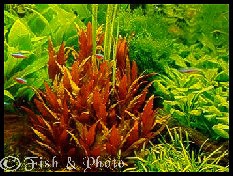
![]() ..Alternathera
reineckii fa. cardinalis
..Alternathera
reineckii fa. cardinalis
![]() .Alternathera reineckii fa. rosaefolia
.Alternathera reineckii fa. rosaefolia
![]() Eusteralis stellata l. zonder Fe r.met Fe dos. Alternathera
reineckii fa. lilacina...
Eusteralis stellata l. zonder Fe r.met Fe dos. Alternathera
reineckii fa. lilacina...![]()
Alternathera
reineckii smalbladerig.. ![]()
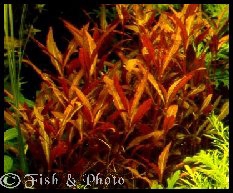
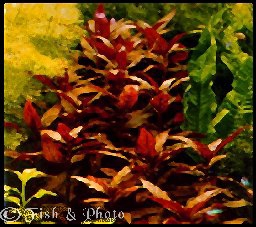
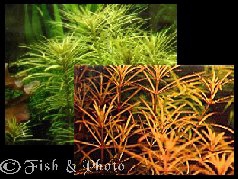
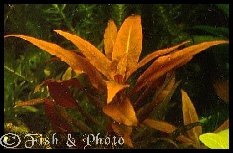
   | ||
| Red
plants in the architectonic aquarium | ||
 |
|
|
|
|
|
|
|
To my
estimation at present the Alternanthera types are the most important color plants
for the modern architectonic aquarium. They were imported about 1965 from South-America
into the Netherlands under the name Telanthera osiris. The line includes two types
who are in an aquaristic way of any importance: Alternanthera reineckii
and Alternanthera sessilis. The appearance of Alternathera may,
depending of the place of origin and the circumstances in the aquarium, with regard
to color and form of the leaves, differ so much that it was held for long with
a number of separate types. That coincides of course with the giant large distribution
area, which extends himself concerning Argentina, Paraguay and Brazil.
The plant is found mainly
on river banks where she can be swamped temporarily. The diversity is related
mainly to culture under water (submerse). The "subspecies" are very
difficult to distinguish . For this reason Christel Kasselmann reached in her
study of these plant 5 different forms. A taxonomic status is not connected to.
These forms proceed fluently in each other so that to determinate them in practice
remains cumbersome. It all are, more or less, grateful aquarium plants as it were
adapted to the architectonic aquarium, or to put it simply; the planted tank.
In a neutral to mild and acid environment they will thrive excellently. Theonly
condition which she claims is a huge degree of light in which |
Alternanthera
reineckii "green"; The tale goes that the plant would
be arisen by sowing in nursery gardens in certain Eastern Bloc countries,
where red colors went lost. Alternanthera reineckii "lilacina",
large perrotleave, thanks the name to the fact that, in good condition,
the bottom of the leaves are colored mostly splendid and intensive lila.
The upper part becomes then light- or wine-red a group healthy Lilacina's
can be a real eye-catcher in an aquarium . Characterisic is that at
every stemnode roots originate. The origin, the feeding, and the illumination
play an important role at that. The plant that this way can become around
50 cm large, grows slowly. They need much light . The bottom wreathe
are a good indicator, if they fall down, the plant is short of something.
Frequently that is light. The plant is extremely suitable for the Dutch
architectonic aquaria, in which one tries to keep the water quality
neutrally or gentle acid. But also in water in the alkaline range the
growth can be still very satisfying. The |